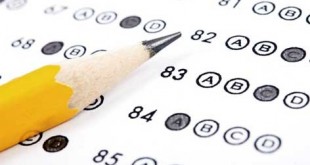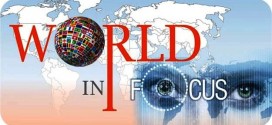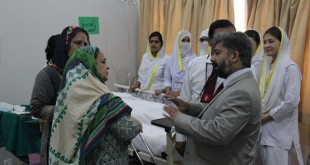A Glance at HRCP’s Annual Report 2017
The Human Rights Commission of Pakistan (HRCP), recently released its annual report for 2017 in which it took stock of the human rights situation in Pakistan in the previous year. The report suggests that the country has failed to make progress on several issues, ranging from forced disappearances to women’s rights and protection of religious minorities over the past year. The report further reveals that in 2017, more Pakistanis died in incidents described as ‘encounters’ than in gun violence or in suicide attacks. It also took aim at religious bigotry and the government’s refusal to push back against religious zealots, fearing a backlash.
Here is a brief analysis of the report:
Administration of justice
There were 333,103 cases pending in different courts of the country in 2017 while clashes between legal practitioners and the judiciary intensified. The operation of the military courts was extended for a further two years through the 23rd Constitutional Amendment. On the other hand, for the every first time in the history of Pakistan, the 2017 national census included a category for transgender persons and the government introduced transgender category in national passports.
The overhaul of the judicial system, recommended by the UN Special Rapporteur and promised in the National Action Plan, has yet to start in earnest.
Number of laws passed
 Sindh had the highest legislative output, enacting 14 laws, closely followed by Khyber Pakhtunkhwa, and then the Punjab and Balochistan.
Sindh had the highest legislative output, enacting 14 laws, closely followed by Khyber Pakhtunkhwa, and then the Punjab and Balochistan.
Law and order
Though the number of deaths linked to terrorism continued to decline in 2017, violence against ‘soft targets’ such as religious minorities and law-enforcement agencies increased.
According to the report, more than 5,660 crimes were reported against women in Pakistan’s four provinces during the first 10 months of the year.
Jails, prisoners and disappearances
The study further revealed that in November 2017, Pakistani prisons homed 82,591 inmates in comparison to 84,315 the previous year.
Number of inmates and prison capacity
Jails in Punjab held 50,289 prisoners with a capacity to house only 32,235; Sindh 19,094 against 12,613; Khyber-Pakhtunkhwa 10,811 against 8,395; and Balochistan 2,397 against 2,585.
Number of female inmates
Death sentences
The report revealed that the courts awarded the death sentence to 253 people, including five women, in 197 different cases while 64 people were executed in 2017, 43 of them following convictions by military courts.
Death sentences and executions
Freedom of movement
Restrictions on freedom of movement continued to prevail, mainly because of poor law and order, protests and sit-ins, militancy and counterinsurgency measures throughout 2017.
Pakistani passport remained as the second worst to travel on, with visa-free access to only six countries. The use of the Exit Control List (ECL) appeared arbitrary at times, with names being freely placed on it, and sometimes removed despite allegations of corruption.
Freedom of expression
Use of the Internet and social media to launch character assassinations or anti-state and anti-religion accusations escalated. The journalists and bloggers continued to sustain threats, attacks and abductions meanwhile the blasphemy law was being used to coerce people into silence.
On the other hand, assaults continued on media houses, TV channel and newspaper offices, and press clubs.
Freedom of association
Pakistan is among the countries deemed the worst in the world to work in, according to the International Trade Union Confederation (ITUC) 2017 Global Rights Index.
Women
Yet again, Pakistan did not fare well in its rankings in international indices measuring gender equality and women and girls’ empowerment, particularly in the Global Gender Gap Report (GGGR 2017) of the World Economic Forum.
The preliminary findings of the 2017 census show the inverse gender ratio to be unchanged since the census of 1981: women and girls at 48.76% remain fewer than men and boys at 51.24%.
Twelve million women voters were not yet registered in the run-up to the 2018 general elections, due to the absence of women’s computerised national identity cards (CNICs), especially in remote rural areas.
Reported cases of violence against women in 2017 were considered the tip of the iceberg, especially in rural areas, where violence against women remains largely unreported due to conservatism, illiteracy, fear of stigma, shame and dishonour and poverty.
Children
Pakistan accounts for 10% of all newborn deaths occurring globally and is one of the five countries which account for half of infant deaths worldwide.
In 2017, Pakistan was able to almost entirely contain the endemic transmission of polio.
The National Commission on the Rights of Child Bill, 2017, which had been pending since 2015, was finally passed into law by the National Assembly.
Despite the enactment of a number of pieces ofchild protection legislation at the national and provincial level in recent years, children continued to suffer all forms of violence in 2017.
The Senate passed the Prohibition of Corporal Punishment Act 2017 in Islamabad Capital Territory. Sindh and Gilgit-Baltistan have also passed laws specifically prohibiting this practice.
Education
With Pakistan due to report on the Sustainable Development Goals to the United Nations in 2018, the country is nowhere near to meeting the deadline of 2030 for ensuring that all children receive primary education.
Pakistan still has the most absolute number of children out of school anywhere in the world, with 5.6 million out of primary schools and around 5.5 million out of secondary schools.
In the fiscal year 2017/18, authorities in Pakistan again failed to fulfil their promise of allocating at least 4–6% of their GDP and at least 15–20% of the total public expenditure for the education sector.
The Global Gender Gap Report 2017 showed that Pakistan continues to rank as the second worst country— 143 out of 144 countries—with a score of 0.546 on a scale where zero denotes gender imparity and one represents parity.
Parents were again compelled to protest against illegal and unrealistic increases in fees by private educational institutions.
Health
The World Health Organisation (WHO) suggests the outlay on health should be 6% of the national GDP, but in Pakistan it has remained at less than 1%.
There has been investment in the health sector over the years, but the rate of progress is lower than most other countries, with the disease pattern heavily dominated by malnutrition and poor dietary practices.
According to WHO, Pakistan is ranked fifth among high-burden countries worldwide and accounts for 61% of the TB burden in the WHO Eastern Mediterranean region.
The prevalence of thalassaemia and HIV/AIDs has increased, as many as 35.5 million adults in Pakistan are diabetic, and the country has the world’s second highest prevalence of hepatitis C, second only to Egypt.
Grim picture
The report further stated that 2017 was the year when Pakistan was elected to the United Nations Human Rights Council, which is ‘responsible for the promotion and protection of all human rights around the globe.’
While this was deemed a ‘diplomatic success’, the HRCP has observed that the country’s disappointing third Universal Periodic Review is cause for serious concern.
False accusations of blasphemy and the ensuing violence, the number of children engaged in labour under hazardous conditions and unabated violence against women remain grim markers of the last year.
An overarching concern is that, even where the protection of legislation exists, the prosecution and conviction of perpetrators has remained very low.
Deaths linked to terrorism may have decreased, but the ‘soft targets’ of religious minorities and law-enforcement agencies continue to bear the brunt of violence.
Pakistan’s bid to stand tall among the international defenders of human rights may be well-intentioned, but simply enacting legislation will not suffice.
The national human rights institutions need adequate authority, independence and resources to carry out their mandates effectively. Without that, the only recourse left to the unrepresented and the disadvantaged is through the activists and human rights defenders, who risk their own freedom to speak out on their behalf.
 Jahangir's World Times First Comprehensive Magazine for students/teachers of competitive exams and general readers as well.
Jahangir's World Times First Comprehensive Magazine for students/teachers of competitive exams and general readers as well.





